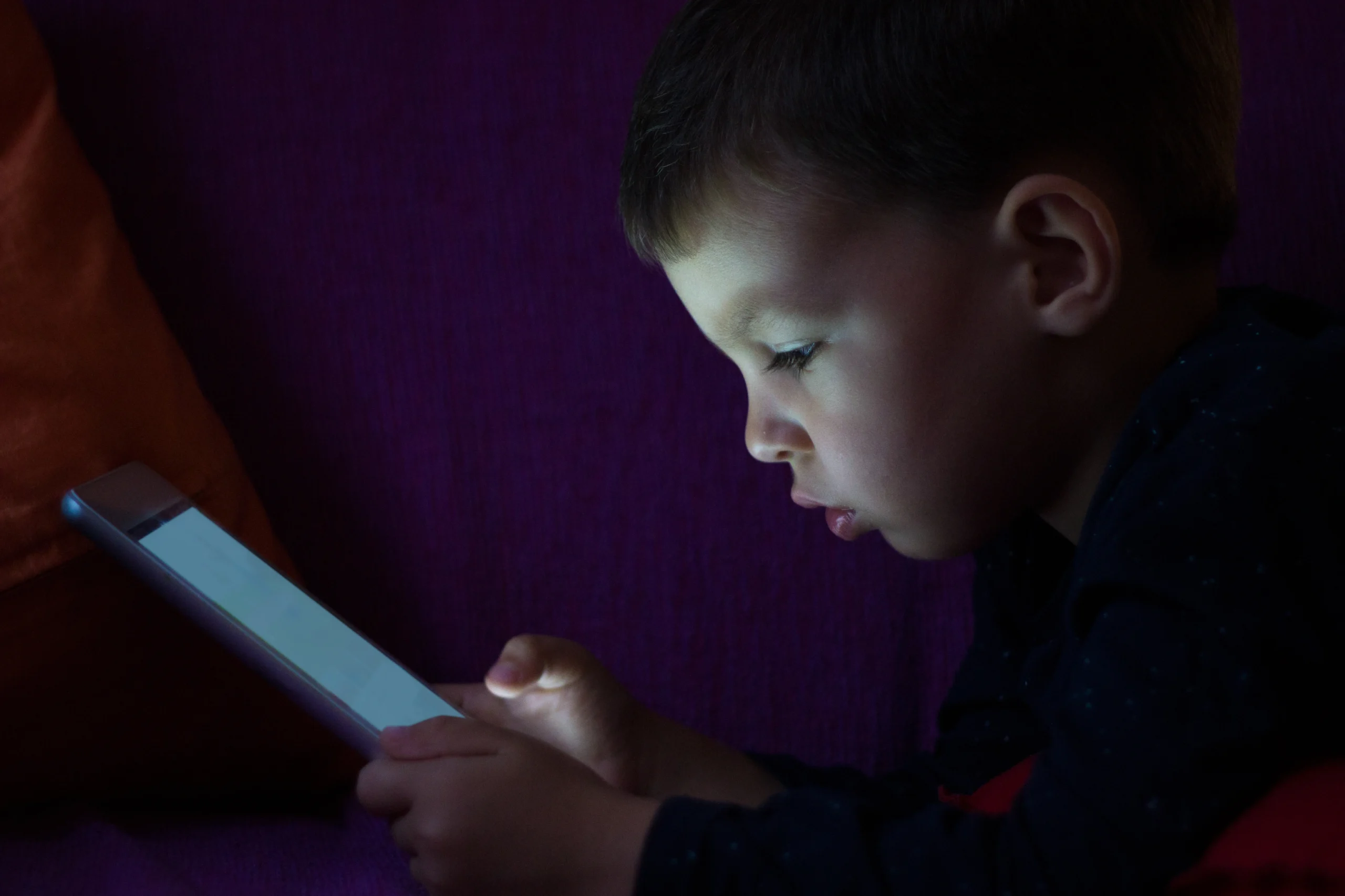Screen Time Balance
Balance Between Reel Life And Real Life
By Minahil Rasool

In the modern world, where digital screens have become omnipresent, the line between our virtual and physical lives grows ever more blurred. Whether we find ourselves engrossed in the glow of a smartphone, captivated by the allure of a television, or diligently working away on a laptop, screens have woven themselves into the very fabric of our daily existence. While much discourse surrounds the potential pitfalls of excessive screen time, it is essential to consider the broader context: how integral has screen time become, and why does it appear inextricable from our lives?
THE RISE OF SCREEN DEPENDENCY
In today’s fast-paced society, screens serve as a gateway to the world, offering an array of conveniences that were once unimaginable. We rely on them for nearly every aspect of our lives, from work and communication to entertainment and education. The average person now spends more time in front of screens than engaged in any other activity, a reality that often sees us reaching for our devices out of habit, even when there is no pressing need.
The ever-present nature of smart gadgets has revolutionised how we live, bringing with it both significant advantages and undeniable drawbacks. The undeniable truth is that our daily routines are now anchored by screen usage. Whether it’s answering emails, attending virtual meetings, or scrolling through social media, screens are a constant presence. This omnipresence begs the question: How much screen time is truly necessary, and what impact does this have on our well-being?
The Double-Edged Sword of Screen Time
The discussion around screen time is often tinged with negativity, with frequent references to the myriad health issues associated with prolonged exposure. These concerns are not without merit. Extended screen time has been linked to eye strain, sleep disturbances, and a host of mental health issues, including anxiety and depression.
It is well-documented that using screens late into the night, especially in bed, can disrupt our natural sleep cycles, leading to poor sleep quality and heightened stress levels. Over time, these effects can compound, contributing to more severe health problems. Beyond the impact on sleep, prolonged screen time is also closely associated with sedentary behaviour, which has been shown to increase the risk of obesity.


The lack of physical activity that often accompanies extended screen use can lead to a decline in overall fitness, further exacerbating health issues such as cardiovascular disease and diabetes. The psychological effects are equally concerning, with studies indicating that excessive screen time can contribute to feelings of loneliness and social isolation, despite the illusion of connectivity provided by social media.
Despite the well-known risks, screen time continues to dominate our lives. But why do we persist in devoting so much of our time to screens, despite being aware of the potential harms?
THE INEVITABLE INTEGRATION OF SCREENS IN DAILY LIFE
One of the primary reasons for our increasing screen dependency is the seamless integration of digital technology into every facet of our lives. The rise of digital learning has made screens an indispensable tool for students, who now rely on laptops and tablets for their education. This shift has made it difficult for young people to limit their screen time, as their academic success often hinges on their ability to engage with digital content. For adults, the demands of the modern workplace have similarly entrenched screen time in daily life.
As more organisations embrace digital transformation, employees are required to communicate through a variety of online platforms, from emails to video conferencing tools. The advent of remote work has further entrenched this trend, with many professionals now spending the majority of their workweek tethered to their screens. The necessity of screen time for productivity has become an undeniable reality, making it increasingly challenging for adults to cut back on their usage. Social media has also played a significant role in the proliferation of screen time.
The average person spends over two hours per day on social media platforms, a figure that underscores the importance of these networks in maintaining personal and professional relationships. In a world where connectivity is paramount, social media has become a lifeline for many, offering a sense of belonging and community that can be difficult to find elsewhere. Even after a long day of work or study, people often turn to screens for relaxation and entertainment, whether through streaming services, gaming, or simply browsing the web. The ease with which we can access endless content has made screen time an almost inevitable part of daily life.
The Hidden Benefits of Screen Time
While it is easy to focus on the negative aspects of screen time, it is important to recognise that it also brings several benefits. When used wisely, screens can enhance productivity, foster creativity, and provide valuable opportunities for learning and personal growth. The internet has democratized access to information, allowing people to acquire new skills and knowledge from the comfort of their homes. Moreover, screens have enabled us to maintain connections with loved ones across great distances, a fact that has been particularly evident during global crises like the COVID-19 pandemic.
The entertainment value of screens cannot be overlooked either. From movies and television shows to online gaming and social media, screens offer a wealth of leisure activities that can provide much-needed relaxation and enjoyment. In moderation, these activities can contribute positively to our mental well-being, offering a respite from the stresses of daily life. However, it is crucial to remember that the benefits of screen time are most impactful when enjoyed in moderation. The overuse of screens can diminish their value, leading to a range of physical and mental health issues that can outweigh the positives.
FINDING THE RIGHT BALANCE
Given the pervasive nature of screen time in our lives, finding a healthy balance is essential. This begins with a conscious effort to assess how much screen time is truly necessary for our daily tasks, whether for work, education, or leisure. By setting clear limits and taking regular breaks, we can mitigate the negative effects of prolonged screen use. For children, screen time should be carefully managed, with a focus on promoting physical activity, social interaction, and healthy sleep habits.
Children aged 3-9 should spend no more than 1-2 hours per day on screens, ensuring that these formative years are dedicated to activities that support their development. Teenagers, who are more likely to use screens for both leisure and educational purposes, should aim to limit their non-essential screen time to around 3-4 hours per day. It is important that the content they consume is positive, creative, and educational, and that their online interactions are meaningful and constructive.
Adults, who often face the greatest challenges in managing screen time due to work commitments, should strive to take regular breaks throughout the day to avoid fatigue and mental strain. The 20-20-20 rule—looking at something 20 feet away for 20 seconds every 20 minutes—can be an effective strategy to reduce eye strain and maintain focus. Additionally, engaging in physical activities, spending time with family and friends, and ensuring adequate sleep are all essential practices for maintaining overall health and well-being.
CONCLUSION
In our digitally-driven world, reducing screen time by even a few hours can seem like an insurmountable challenge. Yet, it is possible to evaluate our screen usage and set boundaries that allow us to enjoy the benefits of technology without compromising our health. By striking the right balance, we can ensure that screen time remains a valuable tool in our lives, rather than a detriment to our physical and mental well-being. Ultimately, no amount of productivity or leisure can surpass the importance of nurturing our bodies and minds.


